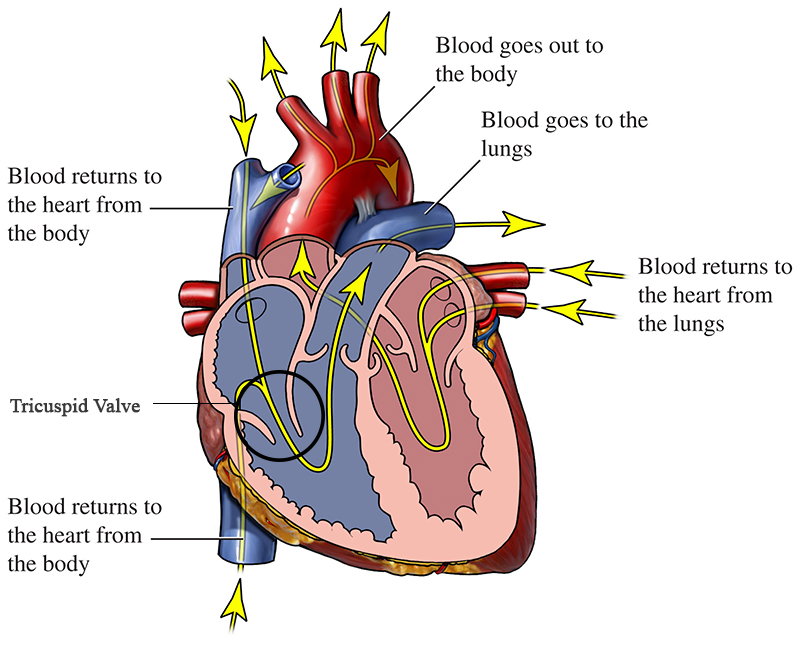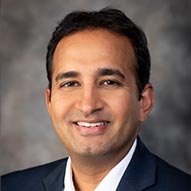Children's Health℠ is home to the largest team of pediatric cardiology and congenital heart defect experts in the region. Most children we treat for tricuspid atresia have excellent outcomes because we have a comprehensive team that can treat all aspects of your child’s condition.
What is Pediatric Tricuspid Atresia?
Tricuspid atresia is a rare heart defect that affects the valve dividing the heart’s upper right chamber (the atrium) from the lower right chamber (the ventricle). Tricuspid atresia is a type of single valve defect that a child is born with (which is also called a congenital condition).
Children with tricuspid atresia can have any of the following problems with their heart:
- A missing tricuspid valve
- A small right ventricle
- A hole between the right atrium and left atrium, which lets blue and red blood mix inside the heart
Many children with tricuspid atresia also have a hole in the wall dividing their right and left ventricle.
These heart issues interrupt the normal flow of blood through your child's heart, which can cause other health issues. In a healthy heart, blood returns to the right side of the heart after delivering oxygen to the rest of the body. This blood is called oxygen-poor or blue blood. The right side of the heart then pumps the blue blood to the lungs where it receives oxygen and becomes red blood. The red blood returns to the heart, this time on the left side, which pumps it back to the rest of the body. A tricuspid atresia can cause your child’s blood to flow in the wrong direction inside of their heart.

What are the signs and symptoms of Pediatric Tricuspid Atresia?
- Blue or purple body or tongue
- Heart murmur
- Shortness of breath
- Difficulty feeding and poor weight gain
- Fatigue
- Abnormal shape of the fingertips (known as “clubbing”)
How is Pediatric Tricuspid Atresia diagnosed?
According to Texas state law, every child born in Texas must receive a congenital heart screening at birth. Tricuspid atresia is often caught during this screening. However, it is becoming increasingly common for it to be diagnosed during pregnancy.
At Children’s Health, we can diagnose it either during pregnancy or in the early days of a baby’s life. Our cardiologists perform many types of imaging to get clear pictures of your child’s heart. These tests help your child’s care team figure out what kind of tricuspid atresia your child has and helps us figure out what kind of surgery they will need.
These tests include:
- Echocardiogram — this test is first-line tool used to diagnose tricuspid atresia. It uses ultrasound (high-frequency sound waves) from a hand-held wand to provide pictures of your child’s heart's valves and chambers to help clarify how well it is pumping blood.
- MRI — using a strong magnetic field and radio waves, an MRI creates detailed images of the heart’s structure and function.
- CT scans — using computer processing to combine 2-dimensional X-ray images, CT scans make a 3-dimensional images of the heart.
- Cardiac catheterization — doctors insert a long thin tube (called a catheter) into one of your child’s arteries or veins. They thread the catheter through your child’s blood vessels to their heart. Once there, the catheter can help doctors measure your child’s oxygen levels and check the pumping function of your child’s heart.
- Dual MRI and catheterization — Children’s Health specialists combine an MRI with a catheterization into one procedure so children can avoid receiving anesthesia more than absolutely necessary.
What causes Pediatric Tricuspid Atresia?
There is no known cause for tricuspid atresia. We do know that tricuspid atresia develops during pregnancy. In addition, tricuspid atresia is common in children with some genetic disorders.
How is Pediatric Tricuspid Atresia treated?
Tricuspid atresia is treated with surgery. There are lots of different surgeries available to children with tricuspid atresia. These procedures aim to create new pathways for your child’s blood in the heart so that red and blue blood do not get mixed up and so their bodies can get the oxygen-rich blood they need.
The surgery your child gets will depend on how their arteries are arranged. Your child’s surgical team will work with you to figure out which surgery is best for your child.
Some of the devices used to treat tricuspid atresia do not grow with children and may need to be replaced later in your child’s life.

































